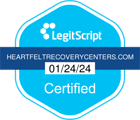Perc 10, the small tablet with the enormous notoriety! This medication, originally known as Percocet, is a favorite among those who require strong pain relief since it mixes oxycodone and acetaminophen. However, if not managed carefully, it can produce pandemonium akin to a mischievous gremlin.
Perc 10 is similar to that friend who can get you into a lot of trouble yet appears cool at first. Legendary is its ability to reduce pain, but it also has the potential to become addictive. Thus, knowing when to bring this drug to the party and when to give it up is essential.
Overcoming a Perc 10 addiction is not only doable, but it can also be an inspiring journey with the correct information and assistance. Let’s explore the world of Perc 10 and learn about the humorous yet therapeutic route to recovery.
The Science of Magic: What Is Perc 10 Made Of?
Despite its straightforward appearance, Perc 10 is a complicated mixture. Its primary components, acetaminophen and oxycodone, combine flawlessly to treat pain. Acetaminophen gives a mild touch to oxycodone, the heavyweight champion opioid, boosting the total effect.
This explosive pair can, however, be two-edged. They are adept at controlling pain, but they also have a way of instilling dependence. The body gets used to them rapidly, and before you know it, Perc 10 is making all the decisions.
Comprehending the scientific basis of Perc 10 can aid in deciphering its effects and enabling those pursuing recovery. In this instance, knowledge is not just the first step toward healing but also power.
The Slippery Slope: The Development of Perc 10 Addiction
Perc 10 doesn’t reveal its goals. It approaches you with the stealth of a ninja. It may be helpful the day after surgery for pain management, but the next day it will need all of your focus. It’s easy to step over the narrow line that separates usage from abuse without even recognizing it.
Perc 10 addiction frequently begins innocuously enough. The body starts to crave more after a prescription here and a dose there. The underlying risks beneath are overshadowed by the tempting euphoric high.
It’s critical to identify the warning symptoms of addiction. Red flags include behavioral changes, mood swings, and a growing demand for the substance. The road to recovery can start as soon as these symptoms are identified.
The Alarm: Realizing You Need Assistance
The hardest thing is acknowledging that there is a problem. However, the road to rehabilitation becomes more obvious if the elephant in the room is addressed. It’s time to face reality and make the initial move in the direction of a better future.
During this stage, support mechanisms are essential. Professionals, friends, and family can all support someone who decides to seek help. Every member of the team is essential to the rehabilitation process because it’s a team effort.
Asking for assistance is a show of strength and resolve rather than weakness. Even though the road is winding and lengthy, it is still worthwhile to travel with the correct assistance.
The Battle Plan: Developing a Recuperation Strategy
It’s time to act after deciding to ask for assistance. It’s crucial to create a recovery strategy that fits each person’s needs. To guarantee a thorough approach, this plan should incorporate lifestyle modifications, counseling, and medical intervention.
Experts in medicine can offer advice on medication-assisted therapies and detoxification. The psychological components of addiction can be addressed by combining these with treatments like cognitive-behavioral therapy (CBT).
Extra layers of care are provided by sober living facilities and support groups. Talking to those who are traveling the same path as you can be encouraging and consoling.
Therapy Time: Leaning Into Counseling’s Power
The foundation of rehabilitation is therapy. It’s the place where new coping mechanisms emerge and old habits are challenged that’s where the magic happens. Cognitive-behavioral therapy (CBT) is a particularly useful tool for understanding and altering cognitive processes in people.
Additional strategies are provided by dialectical behavior therapy (DBT), which emphasizes emotion management and mindfulness. Together, these treatments offer a comprehensive strategy for healing.
Although counseling sessions can be very demanding, they are also very beneficial. They provide a secure environment for confronting anxieties, examining feelings, and developing resilience. The path to recovery is a little less intimidating when one has the assistance of a qualified therapist.
The Function of Support Groups: Power in Crowds
Sharing your journey with others has a special effect. Narcotics Anonymous and other support groups provide a feeling of camaraderie and empathy for those battling addiction.
These groups are a source of inspiration and motivation in addition to offering emotional support. It can be immensely inspiring to hear about the accomplishments of other members and serve as a reminder that they’re not alone.
Becoming involved in support groups is another way to promote accountability. It’s simpler to keep going and to stay dedicated to the healing process when you know that other people are depending on you.
Modifying Your Lifestyle to Create a New Normal
Recovering involves accepting a new way of life, not just giving up Perc 10. This entails altering one’s way of life to promote sobriety and general wellbeing. It could be taking up new interests, changing one’s diet, or realizing how enjoyable exercise is.
Exercise has been demonstrated to release endorphins, which are the body’s natural mood enhancers. Whether it’s dancing, yoga, or running, engaging in joyful activities can make a big difference in the healing process.
It’s also essential to have a supportive environment at home. This may entail letting go of friendships or old routines that are no longer beneficial. It’s about creating a life that reflects your newly discovered values and objectives.
The Positive Aspect: Finding Happiness in Recovery
Being sober is more than just not having Perc 10 in your life; it’s living a full, exciting life. It’s a chance to discover new interests, form deep connections, and travel to uncharted territory.
Many report feeling as though their senses are sharpened and that they can appreciate and understand life more fully. Simple pleasures like a wonderful cup of coffee or a sunset can provide astonishment and happiness.
Although there are obstacles on the path to sobriety, there are also many benefits. It’s an opportunity for a new beginning, a promising and possibility-filled chapter.
Final Thoughts: The Path Ahead
Overcoming a Perc 10 addiction is an emotional roller coaster filled with setbacks and victories. To properly navigate this path, one needs bravery, tenacity, and a good dose of humor.
Every move in the right direction is a triumph, and every obstacle surmounted shows fortitude. A life free from Perc 10 is not just conceivable, but it can become a reality full of hope and happiness with the correct techniques, support, and mindset.
Here’s to the path ahead: may it be full of love, laughter, and the excitement of realizing who a healthier, happier you are.
Dr. Mitchell G. Cohen is a board-certified Internal Medicine specialist with over 34 years of experience in patient-centered healthcare. A graduate of Hahnemann University School of Medicine, Dr. Cohen completed his internship at the University Health Center of Pittsburgh, where he gained invaluable hands-on experience. He is also a certified addiction specialist, holding membership with the American Society of Addiction Medicine (ASAM).
Currently based in Nashua, NH, Dr. Cohen is affiliated with Saint Joseph Hospital, where he provides comprehensive care focusing on both internal medicine and addiction treatment. His expertise includes prevention, diagnosis, and management of adult diseases, as well as specialized care for individuals facing substance use disorders.
Dr. Cohen is committed to fostering open communication, ensuring his patients are fully informed and empowered to make confident decisions about their health and treatment options.

MD Mitchell Grant Cohen
Dr. Mitchell G. Cohen is a board-certified Internal Medicine specialist with over 34 years of experience in patient-centered healthcare. A graduate of Hahnemann University School of Medicine, Dr. Cohen completed his internship at the University Health Center of Pittsburgh, where he gained invaluable hands-on experience. He is also a certified addiction specialist, holding membership with the American Society of Addiction Medicine (ASAM).
Currently based in Nashua, NH, Dr. Cohen is affiliated with Saint Joseph Hospital, where he provides comprehensive care focusing on both internal medicine and addiction treatment. His expertise includes prevention, diagnosis, and management of adult diseases, as well as specialized care for individuals facing substance use disorders.
Dr. Cohen is committed to fostering open communication, ensuring his patients are fully informed and empowered to make confident decisions about their health and treatment options.







